About
We are chemists, physicists, mathematicians, engineers, biologists who work alongside to design bionic units that mimic specific biological functions and/or introduce operations that do not exist in Nature. We apply a constructionist approach where we mimic biological complexity in the form of design principles to produce functional units from simple building blocks and their interactions. We called such an approach: Molecular Bionics.
We are engaged in several activities involving the synthesis and characterisation of novel hierarchal materials whose properties are the result of the holistic combination of its components:
Molecular Engineering
We combine synthetic and supramolecular chemistry to tune inter/intramolecular interactions and self-assembly processes to form dynamic soft materials whose molecular, supramolecular and mesoscale structures are tuned and fit for the final application (pictured right: molecular engineering of nanoscopic structures starting from molecule passing to polymers and finally to supra molecular structures).
Physical Biology
Our materials are designed to interact with living systems and thus its biological activity is studied in high detail. We have developed and established new methodologies to study living systems and how synthetic materials interact with them combining holistically physical and life sciences (Physical Biology).
Synthetic Biology
Both know-hows are applied to study biological organisation and complexity creating synthetic surrogates that act as models, as well as to engineer novel sophisticated ways to interact with living organisms.
Somanautics
In analogy to medical bionics, where engineering and physical science converge to the design of replacement and/or enhancement of malfunctioning body parts, we take inspiration from viruses, trafficking vesicles and exosomes to apply molecular engineering to create nanoscopic carriers that can navigate the human body (Somanautics) with the final aim to improve drug delivery or create new diagnostic tools.
Visit our external website to find out more.
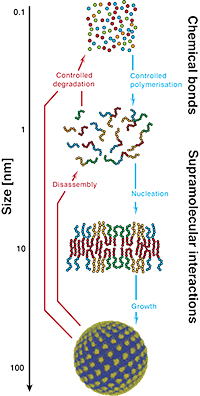


Staff
Giuseppe Battaglia
Projects
| INTERNATIONAL GRANTS | FINANCER | PI |
|---|---|---|
| CheSSTag · Chemotactic Super-Selective Targeting of Gliomas (2020-2023) | European Comission / ERC-CoG | G. Battaglia |
| NATIONAL PROJECTS | FINANCER | PI |
|---|---|---|
| BrainPePN · Nanomedicinas de precisión que penetran el cerebro (2021-2024) | MICIU / Retos investigación: Proyectos I+D | G. Battaglia |
| FUNDRAISING PROJECTS | FINANCER | PI |
|---|---|---|
| A por la COVID-19 (2021-2022) | IBEC / Faster Future 2020 | G. Battaglia |
Publications
Equipment
- State-of-the-art facilities for cell culture including 5 class A cell cabinets: one dedicated for LPS and RNAse free cell culture and one dedicated for infected tissues
- Fluorescence Activated Cell Sorting (FACS)
- Confocal microscope to perform live cell 4D imaging
- Thermocycler
- Real-time PCR
- Automated Western Blot
- Gel Permeation Chromatography
- High-Performance Liquid Chromatography
- Ultra Performance Liquid Chromatography equipped with fluorescence, UV/Vis and Infrared and light scattering detectors
- Dynamic light scattering unit
- Nanoparticle tracking analysis
- UV and Fluorescence spectroscopy
- Automated liquid handling units
- Nanoparticle production units
Collaborations
- Xavier Salvatella
IRB Barcelona - Francesca Peiro
Physics-University of Barcelona - Kostas Kostarellos
Life Science- University of Manchester/ICN2 - Giorgio Volpe
Chemistry-UCL - Simona Parrinello
Cancer Institute -UCL - Finn Werner
Structural Biology -UCL - Nick Lane
Evolutionary Biology -UCL - Darren Hargraves
Pediatric Neuro-Oncology -UCL - Timothy McHugh
Clinical Microbiology =UCL - Sebastian Brander
Neurology -UCL - Joan Abbott
Physiology -King’s College London - Molly Stevens
Bioengineering -Imperial College London - Stefano Angioletti-Uberti
Materials Science -Imperial College London - Ricardo Sapienza
Physics -Imperial College London - Daan Frenkel
Chemisty-University of Cambridge - Charlotte Williams
Chemistry -University of Oxford - Francesco Gervasio
Pharmacology -University of Geneve/UCL, UK - Francesco Stellacci
Bionegineering -EPFL Switzerland - Tambet Tessalu
Cancer Biology -University of Tartu (Estonia)/ Sanford Burnham Prebys Medical Discovery Institute - Darrel Irvine
Bioengineering -MIT - Xiaohe Tian
Life Sciences University of Anhui - Yupeng Tian
Chemistry University of Anhui - Lei Luo
Pharmacy -Southwest University, China - Kai Luo
HuaXi hospital Sichuan University - Darren Hargrave
Great Ormond Street Hospital, UCLH London - Sebastian Brander
Queen Square National Centre for Neurology, UCLH London
News

L’IBEC i IQS acullen la 2a edició del Simposi Barcelona Blood-Brain-Barrier
L’esdeveniment, organitzat conjuntament per l’Institut de Bioenginyeria de Catalunya (IBEC) i l’Institut Químic de Sarrià (IQS), va reunir destacats científics i científiques d’arreu del món per debatre sobre els últims avenços en la recerca de la barrera hematoencefàlica (BBB), des de la seva biologia fonamental fins al seu paper en la malaltia i les estratègies terapèutiques.
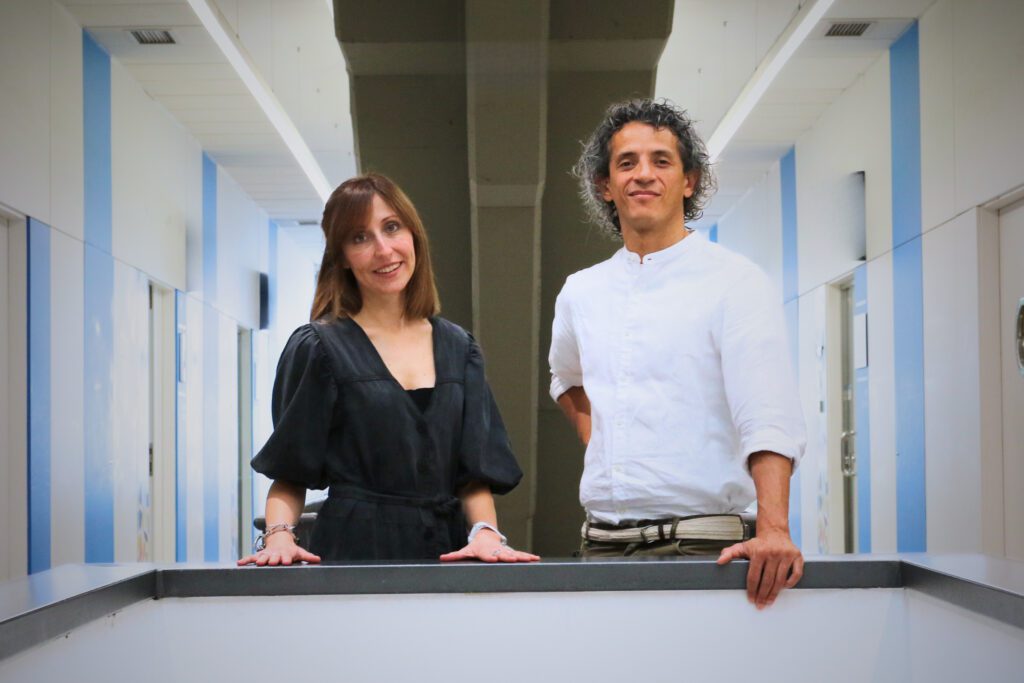
L’IBEC liderarà dos projectes biomèdics del programa CaixaImpulse
Anna Lagunas i Daniel Gonzalez-Carter, ambdós investigadors sènior de l’Institut de Bioenginyeria de Catalunya (IBEC), lideraran sengles projectes de la convocatòria 2025 del programa CaixaImpulse. La iniciativa de la Fundació “la Caixa” té com a objectiu accelerar l’arribada al mercat d’innovacions biomèdiques per apropar-les als i les pacients que puguin necessitar-les. Els dos projectes de l’IBEC s’enfoquen en el tractament de malalties que afecten el cervell.
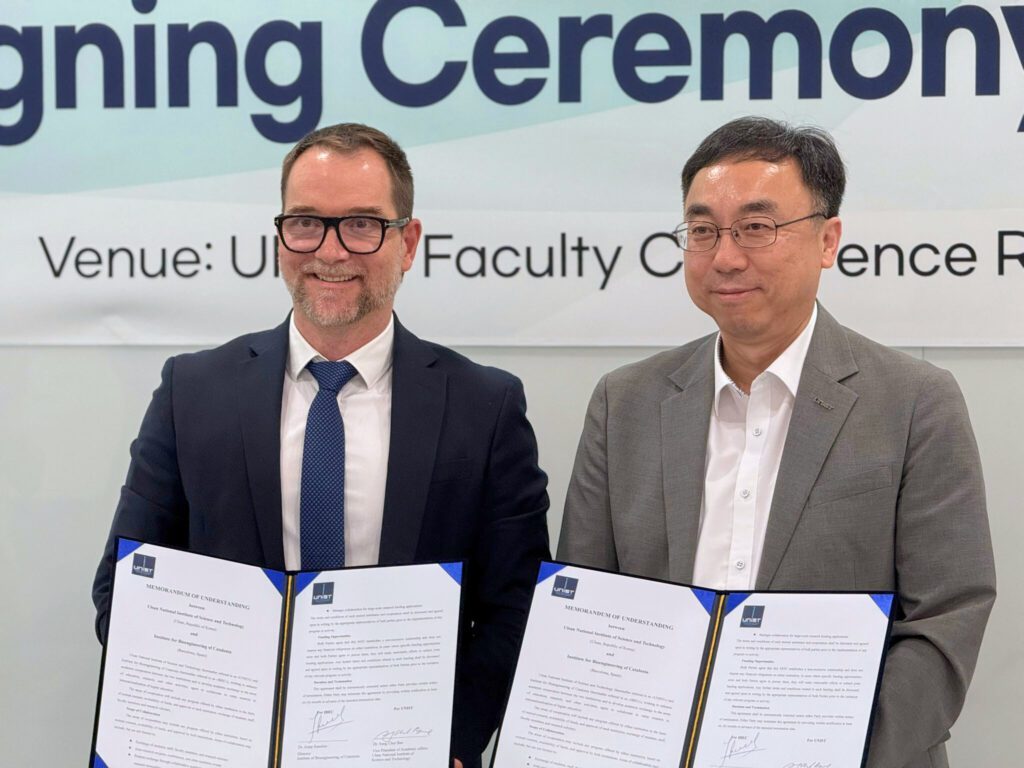
L’IBEC i l’UNIST organitzen un fòrum sobre bioenginyeria d’última generació per reforçar la col·laboració internacional
Avui s’ha celebrat el Fòrum sobre Bioenginyeria d’Última Generació, organitzat per l’Institut de Bioenginyeria de Catalunya (IBEC) i l’Institut Nacional de Ciència i Tecnologia d’Ulsan (UNIST) de Corea del Sud. L’esdeveniment ha posat en relleu la investigació d’avantguarda en bioenginyeria i ha reforçat els llaços de col·laboració entre ambdues institucions.

Creen una cèl·lula artificial capaç d’orientar-se utilitzant només la química
Investigadors de l’Institut de Bioenginyeria de Catalunya (IBEC) han creat la cèl·lula artificial més senzilla del món capaç de navegar químicament, migrant cap a substàncies específiques com ho fan les cèl·lules vives. Aquest avenç, publicat a la revista Science Advances, demostra com les vesícules, bombolles microscòpiques, es poden programar per seguir rastres químics. Aquest descobriment revela els mínims elements necessaris per fer que la vida sintètica es mogui amb un propòsit. Descodificar com naveguen les vesícules permet entendre com es comuniquen les cèl·lules i transporten la seva càrrega, i proporciona un model per dissenyar sistemes d’administració de fàrmacs dirigits.

Una inmersión en la ciencia para fomentar vocaciones STEAM
El EspaiCiència se consolida como un referente en la divulgación científica dentro del Saló de l’Ensenyament, y proporciona a los jóvenes herramientas y conocimientos para adentrarse en el mundo de la ciencia y la tecnología
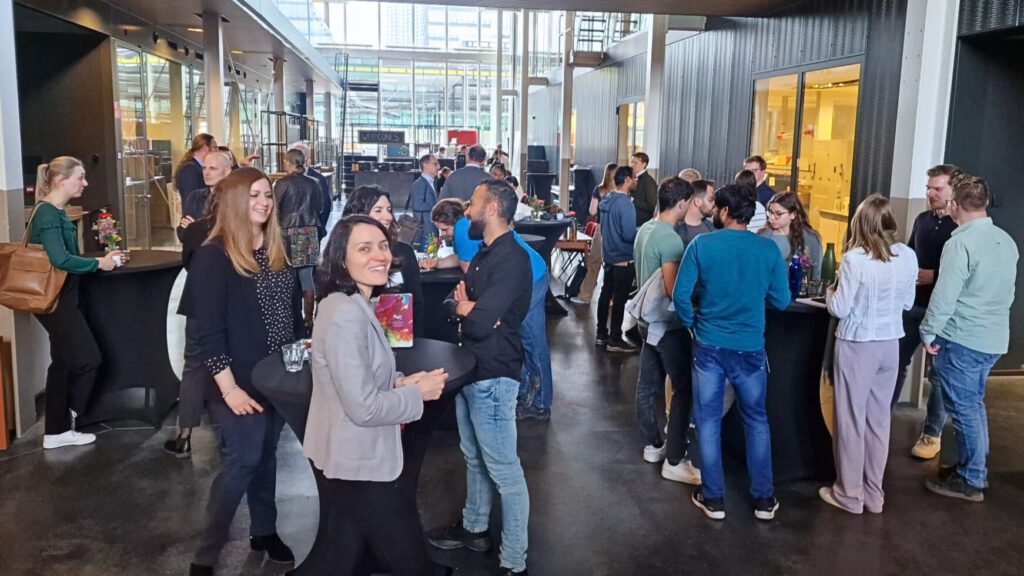
L’IBEC i l’ICMS es retroben a Eindhoven per celebrar el seu Simposi Anual en col·laboració
Avui, 24 de març, s’ha celebrat el simposi conjunt ICMS-IBEC-MPIP. Un esdeveniment coorganitzat per l’Institut de Bioenginyeria de Catalunya (IBEC), l’Institut de Sistemes Moleculars Complexos (ICMS) i l’Institut Max Planck de Recerca en Polímers (MPIP). Durant la jornada, investigadors dels tres centres han compartit les seves àrees de recerca, buscant enfortir els llaços científics entre les institucions.
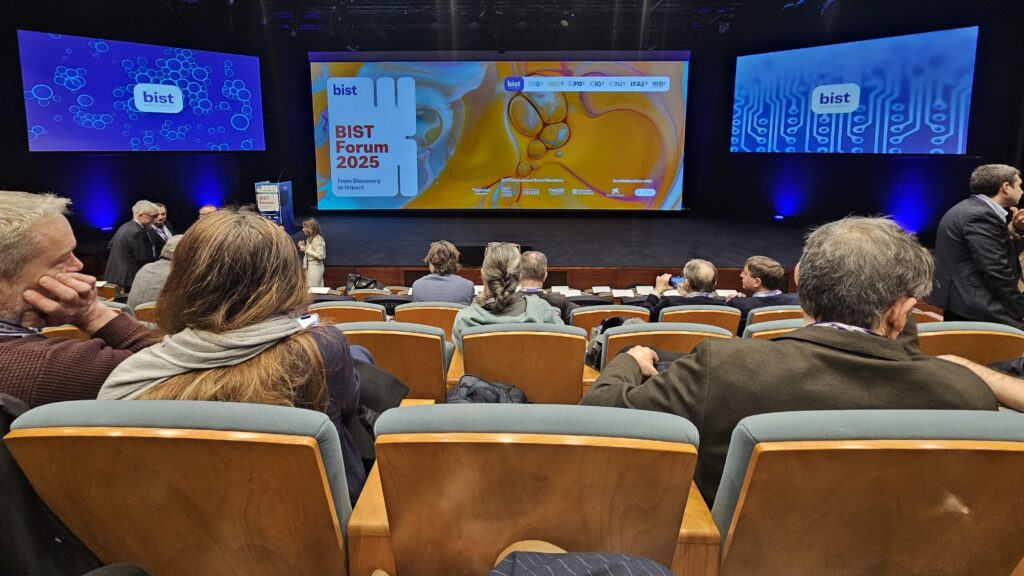
L’IBEC destaca en el BIST Forum amb 4 projectes BIST Ignite i un BIST Ignite Award
Avui s’ha celebrat el BIST Forum, un esdeveniment que reuneix la comunitat científica del BIST i que aquest any s’ha centrat en la iniciativa conjunta dels set centres CERCA per impulsar la medicina de precisió en l’envelliment saludable. Durant l’acte, s’han anunciat els nous projectes BIST IGNITE per fomentar la recerca multidisciplinària, amb la participació de l’IBEC en quatre dels cinc seleccionats. A més, un dels projectes amb participació de l’IBEC ha estat guardonat amb un BIST Ignite Award.
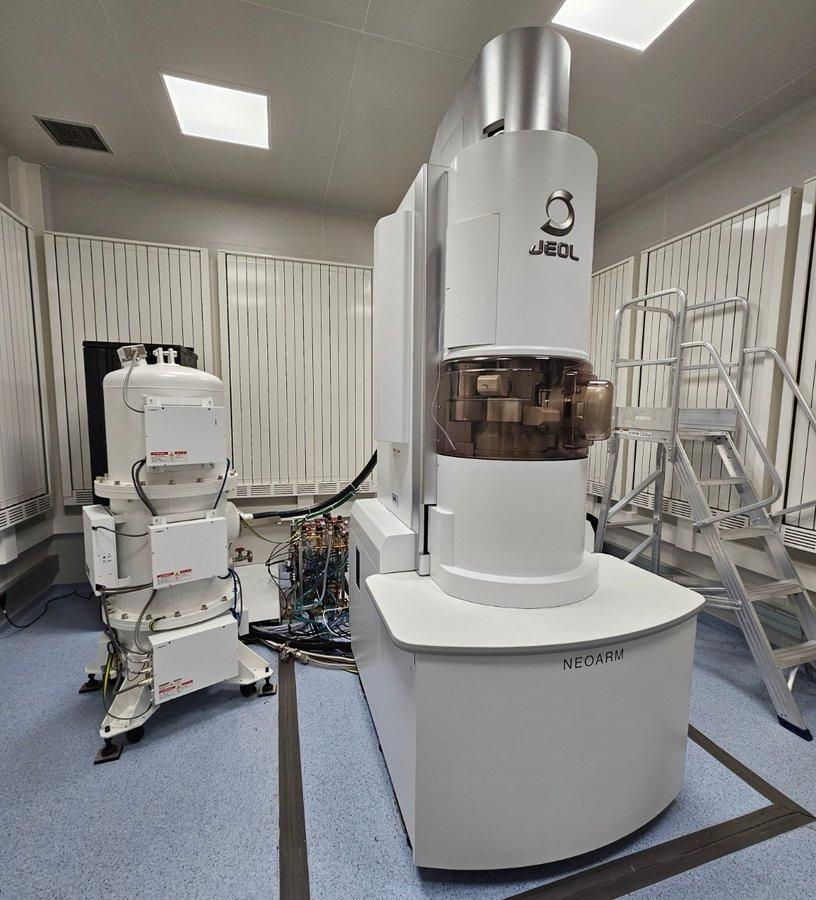
L’IBEC cofinança un nou microscopi electrònic d’última generació
El president de la Generalitat, Salvador Illa, i la consellera de Recerca i Universitats, Núria Montserrat, han inaugurat avui aquesta infraestructura singular localitzada al Parc Científic de Barcelona. El microscopi, que ha comptat amb finançament de l’IBEC i de fons FEDER*, obre la porta a la reconstrucció de biomolècules i virus en tres dimensions, entre altres aplicacions.
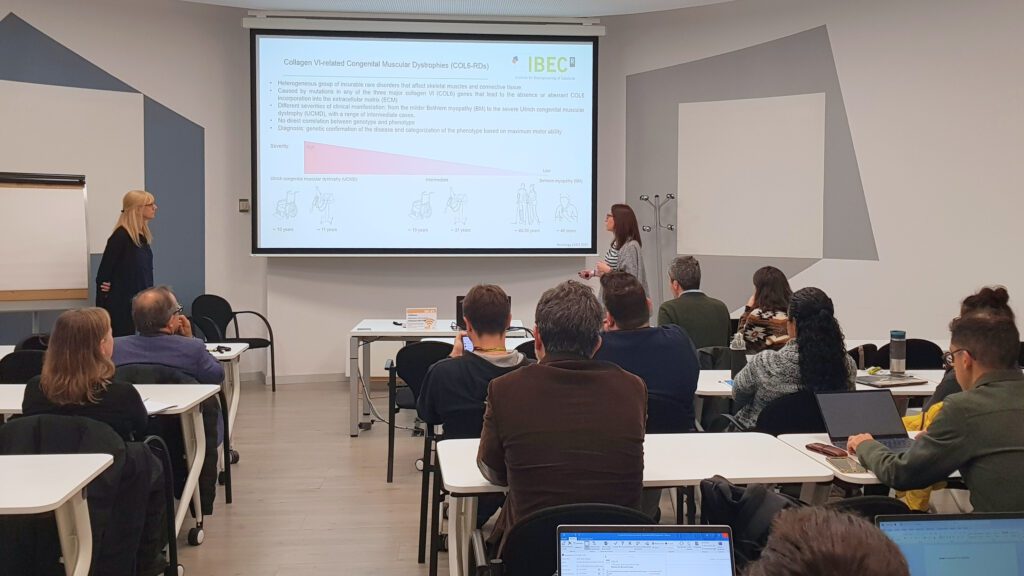
L’IBEC i l’Hospital Sant Joan de Déu reforcen la seva col·laboració amb una jornada d’innovació translacional
L’Institut de Bioenginyeria de Catalunya i l’Hospital Sant Joan de Déu han celebrat una jornada conjunta per impulsar col·laboracions en bioenginyeria i medicina translacional. L’esdeveniment, realitzat aquest matí a l’IBEC, va posar en relleu projectes innovadors, va presentar un programa de doctorat conjunt i va fomentar l’intercanvi d’idees entre investigadors d’ambdues institucions.
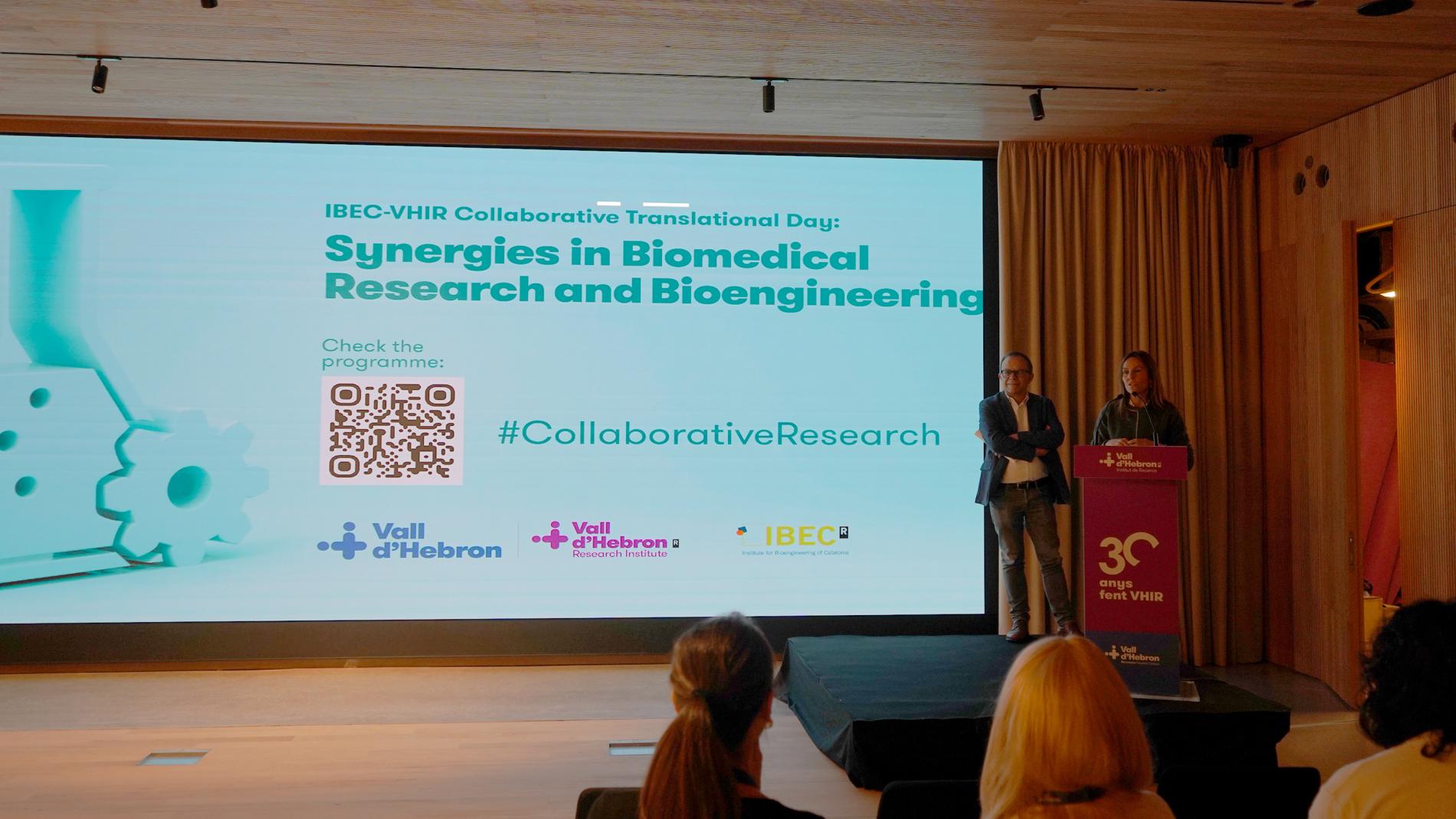
L’IBEC i el VHIR celebren una jornada de col·laboració per fomentar les sinergies
La 1a Jornada Col·laborativa Translacional entre el Vall d’Hebron Institut de Recerca (VHIR) i l’Institut de Bioenginyeria de Catalunya (IBEC), celebrada el 21 de novembre, ha estat una oportunitat per conèixer els projectes i les línies de recerca d’ambdues institucions i promoure la interacció entre els professionals.
Jobs
Senior Translational Material Scientist/Chemist at the Molecular Bionics Group (STM_GB)
Ref: STM_GB // Deadline: 31/08/2023
Predoctoral researcher at the Molecular Bionics Research Group
Ref.: PhD-GB // Deadline: 18/02/2023
Senior researcher at the Molecular Bionics Research Group (SRR_GB)
Ref: SRR_GB // Deadline: 16/01/2023
PhD Student at the Molecular Bionics Research Group
Application Deadline: 17/10/2021Ref: PhD_IB The Molecular Bionics group at the Institute for Bioengineering of Catalonia (IBEC) is looking for PhD student to work on the development of targeted nanotherapeutics for drug delivery with a focus on infectious diseases and cancer. The project will be jointly supervised by Dr. Iris L. Batalha (La Caixa Junior Leader Fellow) and Prof. Giuseppe Battaglia. We are looking for a Chemistry/ Bioengineering/ Biotechnology graduate to work on an interdisciplinary project at the interface of chemistry and biology. The project will include the synthesis and functionalisation of polymers and assembly into nanoparticle delivery systems, protein expression and purification, generation of peptide ligands by phage display, and evaluation of targeted nanoparticles in vitro for applications in the treatment of infectious diseases and cancer.

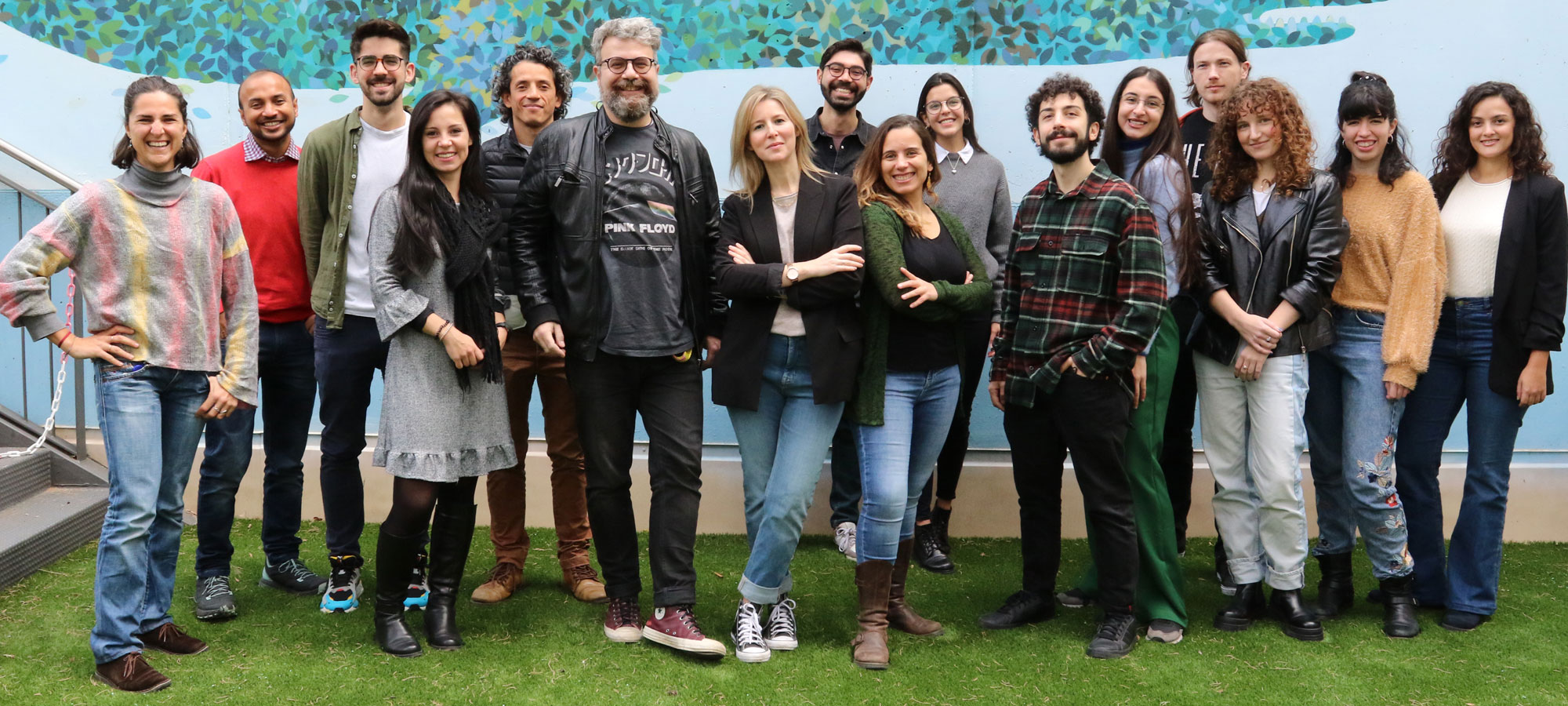
 ibecbarcelona.eu
ibecbarcelona.eu